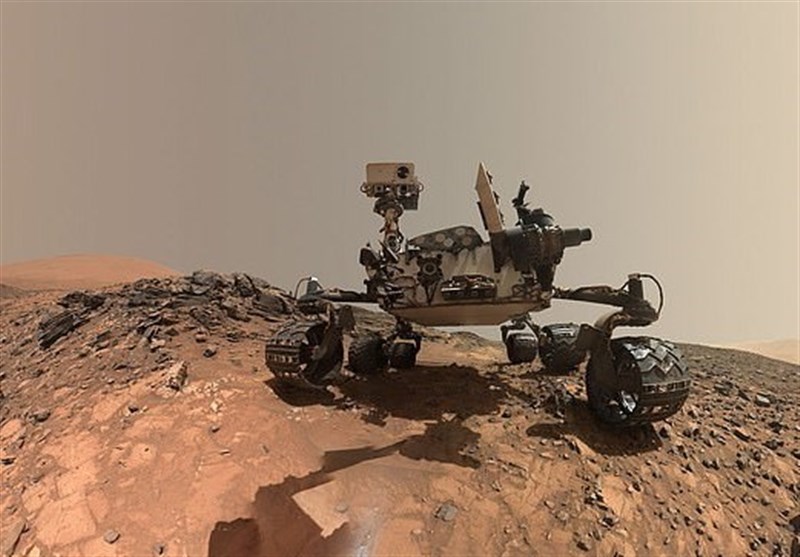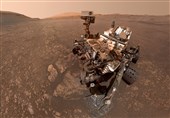High Amounts of Methane Discovered on Mars
TEHRAN (Tasnim) – NASA's Curiosity rover has detected surprisingly high amounts of methane on Mars that could be a sign of life underground on Mars.
It is said to have discovered surprisingly high amounts of methane gas, which is typically created by living entities on Earth, in the air while taking measurements on Mars on Wednesday, the New York Times reported.
The unexpected discovery has led scientists to scrap previously made rover plans in favor of running 'a follow-up experiment,' according to an email written by mission project scientist Ashwin R. Vasavada, which was obtained by the newspaper.
The Curiosity was said to have taken a measurement that found 21 parts per billion of methane in the air, three times what was found during a 2013 measurement.
The methane gas discovery is said to be exciting to scientists because it it could indicate that there are microbes living on Mars — possibly the descendants of life that migrated underground when it was speculated that Mars was a warmer, wetter and more hospitable environment four billion years ago.
The research being conducted over the weekend is said to be aimed at determining whether any corroborating evidence could be found to indicate that there are microbes living underground.
Methane in Mars' air is said to be an important discovery because methane is easily broken up by sunlight and chemical reactions over the course of a few centuries, which indicates that the newfound methane was likely to have been released recently.
The New York Times pointed out, there's a possibility that the methane is actually ancient and, after millions of years of being trapped inside Mars, is just leaking through cracks on the planet's surface.
About 15 years ago, measurements obtained by the European Space Agency's Mars Express and from Earth-bound telescopes detected methane on Mars, but researchers seemed to think that those findings were mistaken data because the results were on the edge of the equipment's detection powers.
Scientists were undeterred in their search for methane on Mars, though.
In 2012, after the Curiosity landed on Mars and was sent out in search of methane, it was said to have turned up empty-handed, with findings of less than one part per billion in the planet's atmosphere.
But, a year later, in 2013, the Curiosity reported back with methane findings of seven parts per billion, which lasted for a few months, before being broken down.
2013 findings have seemingly been confirmed by a reexamination of Mars Express readings from the time, which also indicated a spike in methane.
The results of this weekend's experiments are expected to be sent back to Earth on Monday.
NASA has not yet made any announcements about the Curiosity's methane findings.






